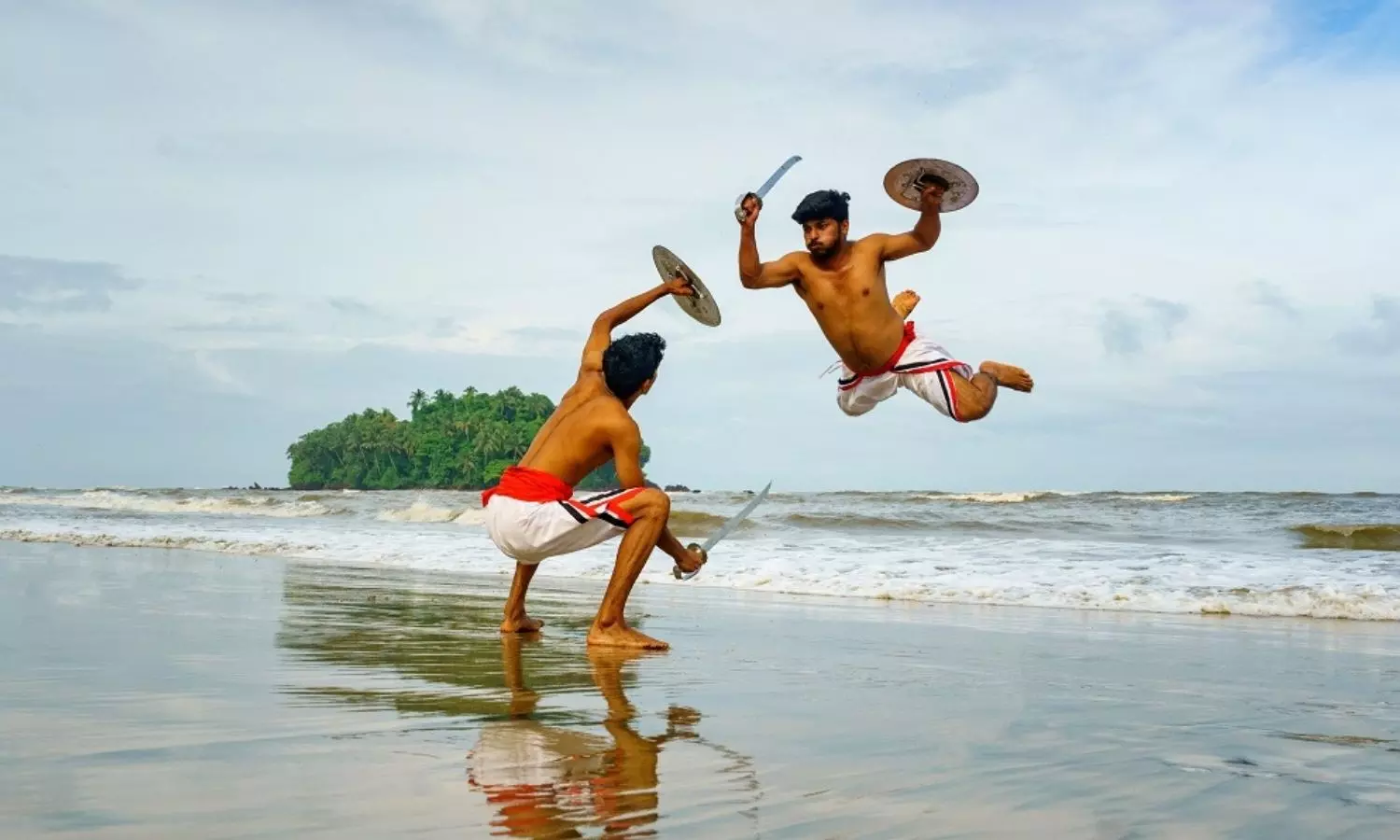Sports and Culture
8 ancient Indian Marial Art forms you should know about
We take a look at some of the age-old martial art forms that continue to exist in different corners of the country

Indian Martial Art Forms (Source: Outlook India)
There is a gross misconception surrounding martial arts that you learn only to fight back or attack your opponent. There is much more to it than meets the eye. A great deal of dedication is required. You have to devote yourself to a different lifestyle that will not only make you a fighter but also a better human being. India, in this regard, has been home to numerous forms of martial arts and many others whose roots can be traced back here. Even though martial arts as a sport is often sidelined, it is important to be aware of the vast, culturally charged community that still continues to live in our country. Here are some of the age-old forms you should know about.
Kalaripayattu
Source: Kerala Tourism
It is one of the oldest forms of martial arts that was founded in the backwaters of Kerala. It requires a strong synergy between the mind and body. At first, oil is applied to the body to make it agile and flexible. Acts of jumping and somersaulting take up a large portion of this form. The usage of swords, daggers, and spears are prevalent as well.
Pari-Khanda
Pari Khanda Federation of India
This art form was created by the Rajputs in the land of Bihar. 'Pari' means shield and 'Khanda' means sword. Hence we get to see the people practising the art form using shields and words a lot. Interestingly, the moves and techniques are also used in the famous Chhau dance of Bihar.
Musti Yuddha
Source: Swadesi
An unarmed martial arts form, the Musti Yuddha can be traced back to Varanasi. While other forms use shields and spears, the proponents of this form pride themselves on their ability to use kicks and punches as their strongest weapons. Although not very popular nowadays, it had its peak during the Middle Ages.
Sqay
Source: YoGems
Originated in Kashmir, the art form includes both armed and unarmed combat. The sword (Tora) is paired with a shield (Bargula) during the act. In competitions, the participants are clad in a blue uniform, equipped with swords of standardised sizes. Recently, the martial arts form has come back in a very big way, especially amongst the Kashmiri youth.
Lathi Khela
Source: The Independent
Literally meaning 'stick game', the form of Lathi Khela involves the use of a stick in combat. Rooted in Punjab and Bengal, the form is quite old as the stick was the predominant choice weapon prior to the invention of guns and blades. A combination of moves can be employed with the stick to inflict severe blows to the opponent. Even today, the Indian police use the lathi to discharge crowds or riots.
Silambam
Source: Perks- Sports Academy
Predominantly found in Tamil Nadu, the art form employs animal movements for attack and defence. It is popular amongst women who want to learn self-defence. The form is a strategic one, relying heavily on footwork. It uses the stick to mimic the ways in which a snake or a tiger would attack its enemy.
Thang-Ta and Sarit Sarak
Source: The Sentinel Assam
Both of these are from Manipur, where the former is an armed form and the latter is an unarmed one. Thang-Ta can be seen using various weapons, but the sword still remains as its prized possession that teaches the students a variety of skills and moves.
